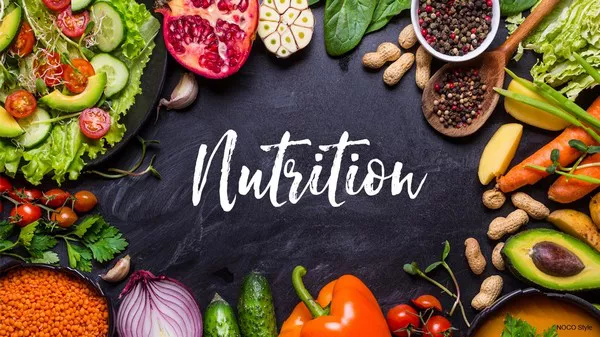In the world of health and fitness, protein shakes have gained immense popularity as a convenient and efficient way to supplement one’s protein intake. Whether you’re a fitness enthusiast, an athlete, or just someone looking to maintain a healthy lifestyle, understanding the caloric content of protein shakes and their place in a balanced diet is essential. This article aims to provide insights into the caloric value of protein shakes, factors affecting their calorie count, and their significance within the broader context of nutrition and fitness.
[inline_related_posts title=”SEE ALSO” title_align=”left” style=”list” number=”3″ align=”none” ids=”1291,1060,1151″ by=”categories” orderby=”rand” order=”DESC” hide_thumb=”no” thumb_right=”no” views=”no” date=”yes” grid_columns=”1″ post_type=”” tax=””]
Protein Shakes: A Nutritional Overview
Protein shakes are beverages designed to provide a concentrated source of protein in a convenient form. They typically consist of protein powder mixed with liquid, which can be water, milk, or a milk substitute. The protein content can vary widely based on the type of protein powder used and the serving size. The primary purpose of protein shakes is to support muscle recovery, growth, and overall health.
Understanding Caloric Content
The caloric content of a protein shake depends on multiple factors, including the type and brand of protein powder, the serving size, and the choice of liquid. On average, a basic protein shake containing 1 scoop (around 30 grams) of protein powder mixed with water may contain approximately 100 to 150 calories. However, this value can differ significantly based on the specific protein source.
Factors Influencing Caloric Count inProtein Shakes
Several factors can influence the caloric count in protein shakes:
1. Protein Source
The type of protein powder used greatly impacts the caloric content of the shake. Protein sources commonly found in powders include whey, casein, soy, and plant-based proteins like pea, rice, or hemp. Whey protein, derived from milk, is one of the most popular choices due to its high biological value. It generally has lower caloric content compared to plant-based alternatives due to the differences in their macronutrient compositions.
SEE ALSO: Whey Protein for Effective Weight Loss: You Need to Know
2. Additional Ingredients
Many commercially available protein powders come fortified with additional ingredients such as vitamins, minerals, fiber, and even added sugars. These additives can influence the overall calorie count of the shake. Reading the nutrition label and ingredient list is crucial to accurately assess the caloric content of the product.
3. Serving Size and Liquid Choice
The serving size specified on the protein powder packaging plays a significant role in determining the number of calories in a protein shake. Additionally, the choice of liquid used to mix the powder can also impact the caloric content. Using water will keep the calorie count lower than using milk, juice, or other calorie-rich liquids.
Incorporating Protein Shakes into Your Diet
When it comes to incorporate protein shakes into your diet, various approaches are available:
1. Meal Replacement
Protein shakes can serve as a convenient meal replacement option, particularly for individuals with busy lifestyles. When used as a meal replacement, the shake should be well-balanced and contain not only protein but also healthy fats, carbohydrates, vitamins, and minerals to ensure adequate nutrition.
2. Post-Workout Recovery
One of the most common uses of protein shakes is post-workout recovery. After a strenuous exercise session, consuming a protein shake with the right balance of protein and carbohydrates can aid muscle repair and replenish glycogen stores.
3. Protein Supplementation
For those struggling to meet their daily protein requirements through whole foods alone, protein shakes can be a practical way to supplement protein intake. Athletes and bodybuilders often rely on protein shakes to achieve their protein goals, especially during periods of intense training.
The Rise of Low-Calorie Protein Shakes
As health-conscious individuals continue to prioritize their well-being, the demand for products that offer substantial nutritional benefits with fewer calories has grown. Low-calorie protein shakes have swiftly become a staple for those aiming to manage their weight, support fitness goals, or simply maintain a healthy lifestyle. These shakes provide a way to increase protein intake without significantly impacting overall caloric intake, making them a versatile tool for various dietary needs.
The composition of low-calorie protein shakes is a critical factor in their effectiveness. Manufacturers often employ various strategies to create products that are both protein-rich and low in calories:
1. Protein Sources
Low-calorie protein shakes commonly utilize high-quality protein sources such as whey, casein, soy, or plant-based options like pea, rice, or hemp. These sources offer a balanced amino acid profile while contributing minimal calories.
2. Sweeteners and Flavor Enhancers
To maintain palatability without adding excessive calories, low-calorie protein shakes may incorporate natural or artificial sweeteners and flavor enhancers. These components contribute to the overall taste experience without significantly impacting the caloric content.
3. Dietary Fiber
Incorporating dietary fiber into low-calorie protein shakes not only aids in digestion but also contributes to a feeling of fullness. Fiber-rich ingredients, such as psyllium husk or inulin, can enhance the shake’s nutritional profile while keeping calorie count low.
Balancing Calories and Nutrition with Protein Shakes
While protein shakes can be a valuable addition to a balanced diet, it’s important not to solely rely on them for essential nutrients. Whole foods offer a wider spectrum of vitamins, minerals, and dietary fiber that are often lacking in protein powders. Striking a balance between protein shake consumption and a variety of whole foods is key to achieving a well-rounded nutritional profile.
Protein Shake Alternatives with Lower Calorie Content
For individuals seeking to maintain or improve their nutritional intake while managing calorie consumption, protein shake alternatives provide a variety of options. These alternatives offer similar nutritional benefits to traditional protein shakes but with lower calorie content.
1. Greek Yogurt Smoothies
Greek yogurt is a nutritional powerhouse, rich in protein and probiotics that support gut health. Combining Greek yogurt with fruits, vegetables, and a splash of liquid (water, almond milk, etc.) creates a creamy and satisfying smoothie. The protein content in Greek yogurt contributes to muscle recovery and satiety, while the inclusion of nutrient-dense ingredients ensures a well-rounded snack or meal replacement.
2. Cottage Cheese Blends
Cottage cheese is another excellent source of protein, offering a unique texture and flavor profile. Blending cottage cheese with fruits, such as berries or peaches, and a touch of honey or a natural sweetener results in a protein-packed treat. This alternative delivers a balanced combination of protein, carbohydrates, and healthy fats while keeping calories in check.
3. Silken Tofu Shakes
For individuals following a plant-based diet, silken tofu provides a versatile protein source that can be easily blended into shakes. Silken tofu has a smooth texture and mild flavor, making it an ideal base for both sweet and savory options. By adding fruits, spices, and a liquid of choice, such as coconut water or almond milk, you can create a low-calorie protein shake alternative that is both filling and nutritious.
4. Egg White Beverages
Egg whites are a pure source of protein with minimal fat and calories. Liquid egg white products are available in many stores, offering a convenient way to incorporate protein into shakes without the need to separate eggs. Combining liquid egg whites with a banana, cinnamon, and a touch of nut butter results in a satisfying shake that provides essential amino acids for muscle recovery.
5. Plant-Based Protein Powders
While traditional protein powders may contain additional ingredients that contribute to their calorie count, plant-based protein powders often provide a leaner alternative. Look for protein powders made from pea, rice, or hemp protein, as these options tend to have fewer calories while maintaining a respectable protein content. These powders can be mixed with water or a low-calorie liquid for a simple, effective shake.
6. Homemade Nut Butter Blends
For those who enjoy a nutty flavor profile, blending a tablespoon of nut butter (such as almond, peanut, or cashew butter) with a banana and water or unsweetened almond milk can create a delicious and nutritious shake. Nut butters offer healthy fats and a moderate amount of protein, contributing to both flavor and satiety.
7. Chia Seed Puddings
Chia seeds are a plant-based source of protein and healthy fats. When soaked in a liquid, they absorb the liquid and create a pudding-like texture. Combining chia seeds with almond milk and a touch of natural sweetener results in a nutrient-rich pudding that can be consumed as a satisfying snack or dessert alternative.
8. Choosing the Right Alternative
When selecting a protein shake alternative with lower calorie content, consider your dietary preferences, goals, and any potential dietary restrictions. Opt for options that offer a balance of protein, carbohydrates, and healthy fats, along with a variety of vitamins and minerals. Experiment with different ingredients and combinations to find alternatives that best suit your taste and nutritional requirements.
Customizing Your Protein Shake
Creating a personalized protein shake to suit your caloric and nutritional needs is a smart approach. Opt for protein powders with minimal additives and select a protein source that aligns with your dietary preferences and goals. Adjust the serving size and liquid choice to control the calorie content while maintaining an appropriate protein-to-calorie ratio.
Conclusion
Protein shakes can be a convenient and effective way to increase protein intake, support muscle growth, and aid in post-workout recovery. Understanding the factors that influence the caloric content of protein shakes empowers individuals to make informed dietary choices. Remember that while protein shakes can be a valuable tool in achieving your health and fitness goals, they should be integrated within a well-rounded diet that includes a variety of nutrient-rich whole foods. Always consult a healthcare professional or registered dietitian before making significant changes to your dietary habits to ensure they align with your individual needs and goals.
[inline_related_posts title=”Related Topics” title_align=”left” style=”list” number=”3″ align=”none” ids=”1343,1314,1260″ by=”categories” orderby=”rand” order=”DESC” hide_thumb=”no” thumb_right=”no” views=”no” date=”yes” grid_columns=”1″ post_type=”” tax=””]

































